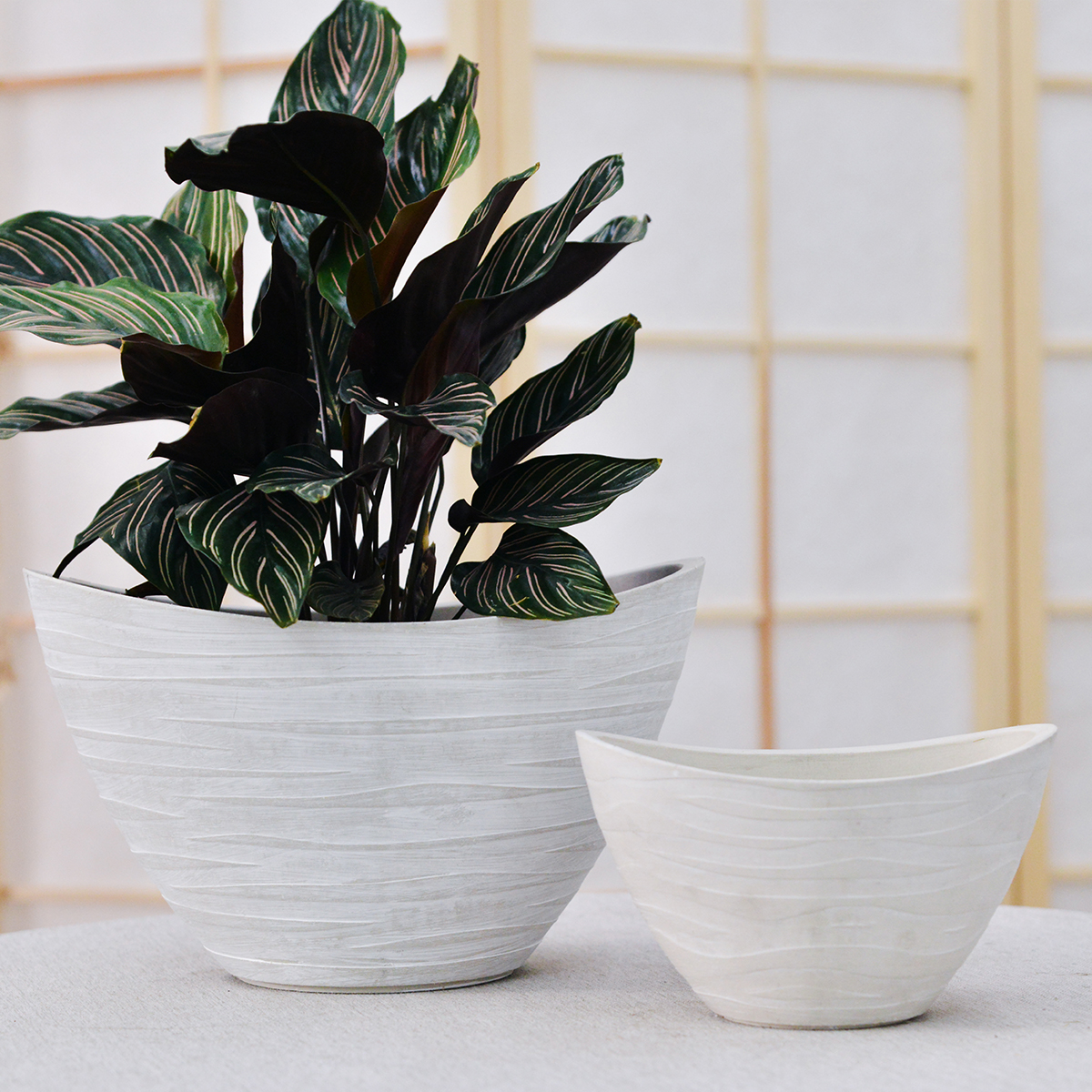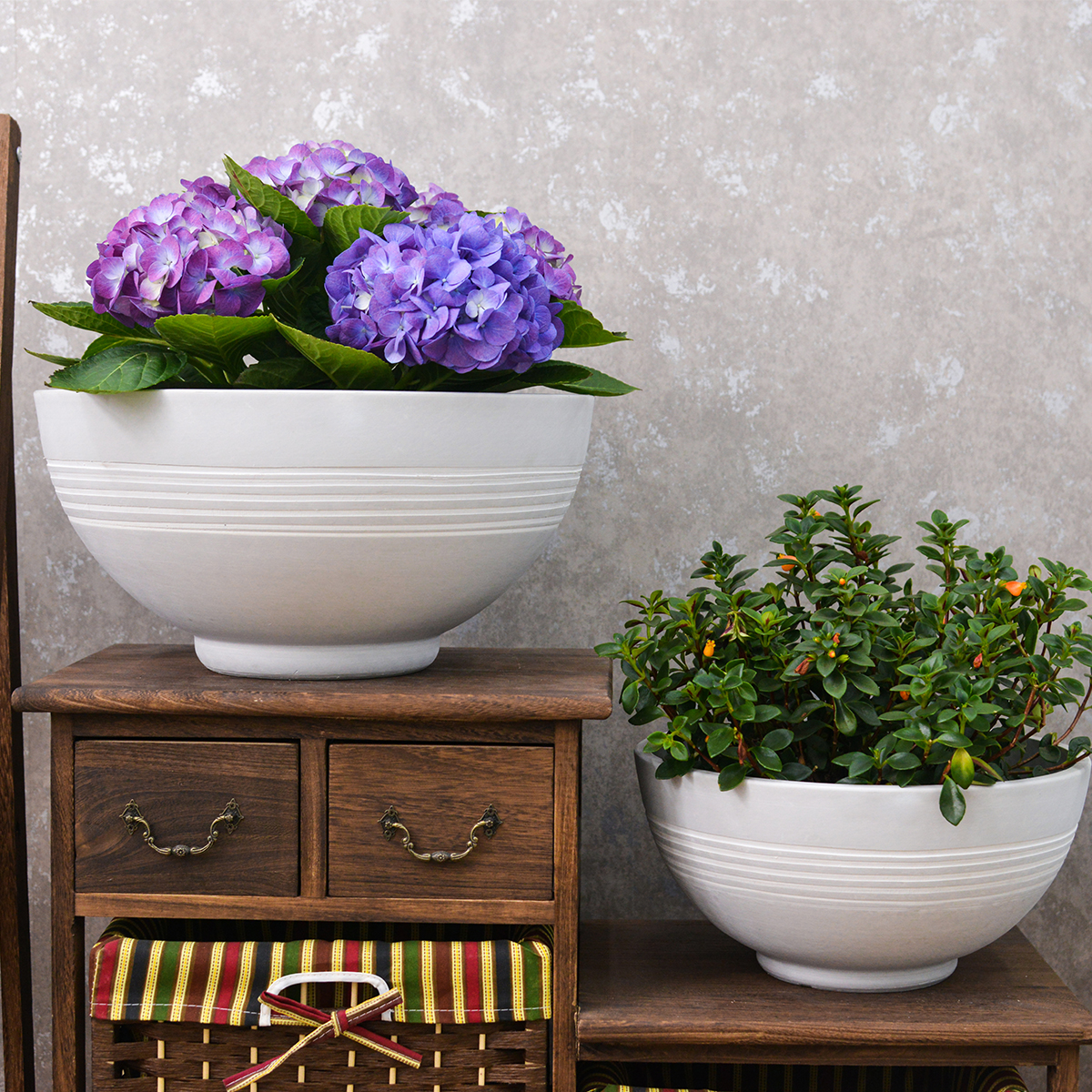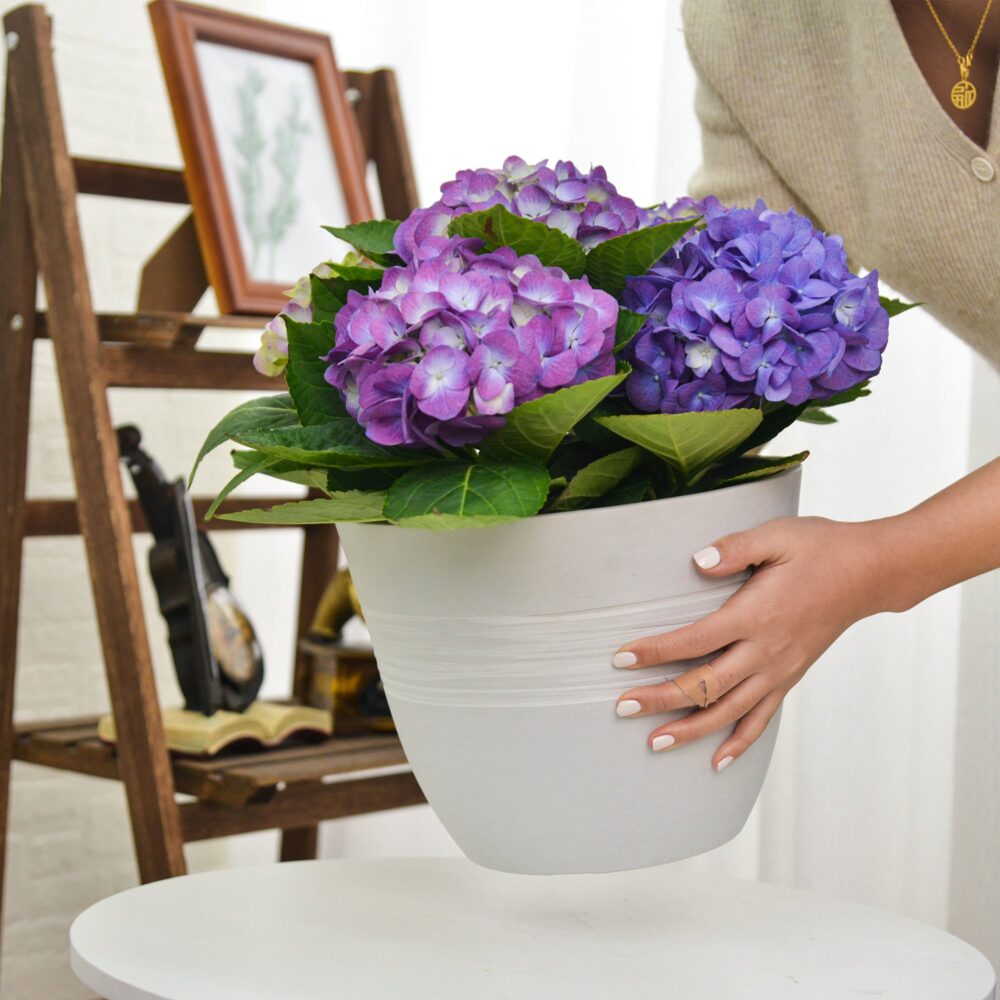Carnations in Pots: The Ultimate Guide to Growing Dianthus Outdoors in Containers (Fragrant & Colorful!)
Want to fill your patio, balcony, or garden with the classic charm and delightful fragrance of Carnations (Dianthus caryophyllus)? Growing these beloved flowers in containers is a wonderfully rewarding way to enjoy their beauty and scent, even in limited spaces. Celebrated for their ruffled, clove-scented blooms, their wide range of colors, their long blooming season, their compact growth habit, and their adaptability to container gardening, Carnations are perfect for adding a touch of traditional floral elegance and sweet fragrance to your outdoor living areas. This comprehensive guide will provide you with everything you need to know to grow Carnations successfully in outdoor pots, from selecting the best varieties and containers to mastering essential care techniques for a stunning and fragrant floral display.
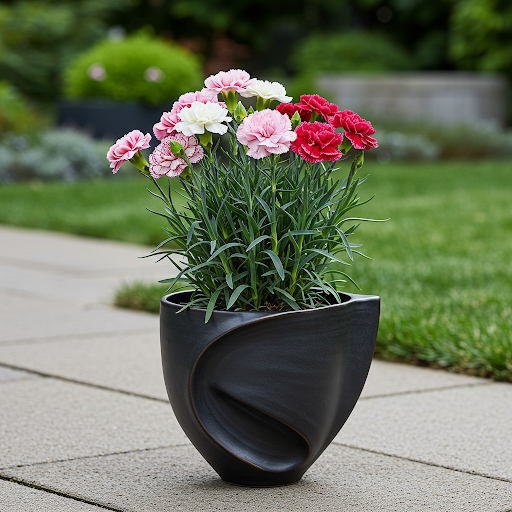
Carnations
What are Carnations?
Carnations, scientifically known as Dianthus caryophyllus, are herbaceous perennial flowering plants belonging to the Caryophyllaceae family (Pink or Carnation family). Believed to be native to the Mediterranean region, they have been cultivated for centuries and are now one of the world’s most popular cut flowers and garden ornamentals, prized for their beautiful ruffled flowers, intense clove-like fragrance (in many varieties), wide array of colors, long vase life, and relative ease of cultivation. Carnation plants are characterized by their clump-forming, often bushy growth habit, their slender, gray-green foliage, and their distinctive flowers that are typically ruffled or fringed at the edges and come in a vast spectrum of colors, including red, pink, white, yellow, orange, purple, and bi-colors. Flowers can be single, semi-double, or fully double, and many varieties are intensely fragrant, especially the clove scent. They exhibit a relatively compact size, typically reaching heights of 6 inches to 3 feet (15-90 cm) depending on the variety, making them well-suited for both garden beds, borders, and container culture. Carnations are known for their classic floral beauty, their association with love, affection, and various symbolic meanings depending on color, their popularity in bouquets and floral arrangements, and their ability to bring a touch of traditional charm and sweet fragrance to any garden setting.
Are Carnations Good for Outdoor Pots?
Yes, Carnations are exceptionally well-suited for outdoor pots and container gardening, and are a popular choice for adding color and fragrance to patios, balconies, entryways, and other outdoor living spaces. Their adaptability to container culture, manageable size in pots, long blooming season, beautiful and fragrant flowers, and relative ease of care make them ideal for container cultivation. Growing Carnations in pots offers several advantages:
- Ideal for Patios and Balconies: Container gardening allows you to enjoy Carnations even if you have limited garden space, such as on balconies, patios, or decks. They bring a touch of classic floral beauty and fragrance to paved areas.
- Portability: Potted Carnations can be easily moved to optimal locations for sunlight, display, or shelter from extreme weather. You can rearrange them to create stunning focal points or seasonal displays. Bring them indoors to protect from heavy rain or extreme heat if needed.
- Controlled Soil Conditions: Container gardening allows you to provide the specific well-draining, slightly alkaline soil mix that Carnations prefer and control watering and fertilization more precisely, which is important for their health and flowering.
- Design Versatility: Carnations in pots can be used as standalone specimen plants in decorative pots, grouped together for a massed display of color, incorporated into mixed container arrangements with other annuals and perennials, or used in window boxes and as edging plants in larger containers. Their diverse colors and forms allow for various container gardening styles.
- Pest and Disease Management: Container growing can help reduce some soilborne pest and disease issues that can affect Carnations planted directly in the ground.
- Highlighting Fragrance: Placing potted fragrant Carnations near seating areas, windows, or walkways allows you to fully enjoy their sweet, clove-like scents.
- Soil Drainage Preference: Carnations need excellent drainage, which is easier to control in pots than in garden beds, especially in areas with heavy clay soil.
Ideal Growing Conditions for Carnations in Pots:
Types of Carnations for Pots: While most Carnations can be grown in containers, some types and varieties are particularly well-suited due to their size, growth habits, and flowering characteristics:
- Dwarf or Border Carnations: These are compact, shorter varieties that are ideal for pots and containers. Look for varieties specifically labeled as “dwarf,” “border,” or “patio” carnations. Examples include ‘Dwarf Chabaud’, ‘Ideal Select’, ‘Floral Lace’, ‘Pink Kisses’, ‘Sugar Plum’.
- Perpetual or Florist’s Carnations (Potted for Seasonal Color): While traditionally grown as cut flowers, florist’s carnations can be grown in pots for their large, showy blooms and long stems. However, they may require staking and are often treated as annuals or biennials in containers, especially in warmer climates. Choose shorter, more compact florist’s types if possible.
- Spray Carnations (Mini Carnations): Spray carnations, with their clusters of smaller blooms on branching stems, are also well-suited for containers, offering a more informal and abundant floral display.
- Consider Flower Type and Fragrance: Choose varieties based on your preferred flower type (single, semi-double, double, ruffled, fringed), flower color, fragrance intensity (clove scent varies among varieties), and bloom time (early, mid, late season) to suit your preferences and container size.
Light: Carnations thrive in full sun. They need at least 6-8 hours of direct sunlight per day, and ideally more, to bloom profusely and develop strong stems and vibrant flower colors. When grown in pots outdoors, position them in the sunniest location possible in your garden or patio. They will tolerate very light afternoon shade, but full sun is best for optimal flowering and overall plant health. Insufficient sunlight will result in fewer flowers, weaker stems, and less vibrant colors.
Soil: Carnations need well-draining soil that is slightly alkaline to neutral and moderately fertile. Use a high-quality general-purpose potting mix. Amend potting mix with perlite, vermiculite, or coarse sand to further improve drainage and aeration, as excellent drainage is crucial for carnations to prevent root rot. Carnations prefer a slightly alkaline to neutral soil pH, ideally around pH 6.5 to 7.5. You can add garden lime or dolomitic lime to the potting mix to raise the pH if needed, especially if using a peat-based mix which tends to be acidic. Avoid overly acidic soils.
Watering: Carnations prefer consistently moist soil, but they are very sensitive to overwatering and waterlogged conditions. Water thoroughly when the top inch of soil feels slightly dry. Water deeply until water drains out of the drainage holes. Then, allow the topsoil to slightly dry before watering again. Avoid overwatering and consistently soggy soil, which is the most common mistake in carnation care and can lead to root rot and fungal diseases. Also, avoid letting the soil dry out completely, especially when plants are actively growing and blooming, as drought stress can also weaken them. Carnations prefer a “moist but not soggy” soil environment. Watering frequency will depend on weather conditions, light levels, and pot size. Water more frequently during warmer, drier periods and less frequently during cooler, cloudier periods. Water at the base of the plant, avoiding wetting the foliage and flowers as much as possible, to help prevent fungal diseases.
Temperature: Carnations prefer cool to moderate temperatures, ideally between 50-70°F (10-21°C) during the growing season for best flowering. They are cool-season plants and bloom best in spring and fall in many climates. In Singapore’s consistently warm climate, Carnations may perform best during the slightly cooler months or in partially shaded locations during the hottest part of the year. They can tolerate slightly warmer temperatures, but prolonged heat stress can reduce flowering and quality. Protect from temperatures below freezing in colder climates (less relevant in Singapore, but useful if temperatures occasionally dip). Consistent cool to moderate temperatures are beneficial for prolonged flowering and vibrant colors.
Humidity: Carnations prefer moderate humidity and good air circulation. High humidity can increase the risk of fungal diseases, especially if combined with poor air circulation and wet foliage. Singapore’s humidity can be challenging for carnations. Ensure good air circulation around potted plants by spacing them adequately and choosing well-ventilated locations. Avoid overcrowding. Water at the base of the plants to keep foliage dry.
Fertilizer: Carnations are moderate feeders and benefit from regular fertilization during the active growing and blooming season to support healthy growth and abundant flowering. Fertilize every 2-4 weeks during the spring and summer growing season (active growth and bloom period). Use a balanced liquid fertilizer (e.g., 10-10-10 or 20-20-20) diluted to half strength, or a fertilizer specifically formulated for flowering plants or perennials. Follow product label instructions for application rates. A fertilizer slightly higher in potassium (the last number) can encourage better flowering and stronger stems. You can also amend the potting mix with slow-release fertilizer granules at planting time for a season-long feeding. Avoid over-fertilizing, which can lead to weak, leggy growth and fewer flowers. Reduce or stop fertilizing in late summer or fall as growth naturally slows down.
Choosing the Right Pots for Carnations:
Suitable Pot Types: Carnations can be grown in various pot types, but good drainage and appropriate size are important. Suitable pot types include:
- Terracotta Pots: Terracotta pots are an excellent choice for Carnations as they are porous, allowing for good aeration and drainage, and help prevent overwatering. Terracotta also provides good stability and a classic look.
- Ceramic Pots (Unglazed or Glazed): Unglazed or glazed ceramic pots can be used, offering a wide range of decorative styles. Ensure they have drainage holes. Unglazed ceramic is more breathable like terracotta. Choose based on your desired aesthetic and pot size needs.
- Resin Pots (Breathable Types): Some newer resin pots are designed to be more breathable than standard plastic, mimicking terracotta. Look for resin pots specifically marketed as “breathable” or “self-watering” (but still ensure good drainage).
- Plastic Pots (with Caution on Overwatering): Sturdy plastic pots can be used, especially for lightweight portability, but be extra careful not to overwater in plastic pots as they retain moisture more than terracotta. Ensure excellent drainage and use a very well-draining potting mix.
Drainage: Excellent drainage is absolutely essential for Carnations to prevent root rot. Ensure your chosen pot has drainage holes at the bottom. Avoid pots without drainage holes. Always use a drainage layer at the base of the pot (e.g., a layer of gravel or pot shards) beneath the potting mix to further enhance drainage. Elevating pots slightly on pot feet or bricks can also improve drainage and air circulation.
Pot Size: Choose pot sizes appropriate for the type and size of Carnation and your desired display. Carnations have relatively shallow root systems and don’t need very deep pots, but need enough space for their roots to spread and for the plant to grow.
- Dwarf or Border Carnation Varieties: Start with pots that are at least 6-8 inches in diameter and 6-8 inches deep. For mature dwarf varieties, pots that are 8-10 inches in diameter and depth are usually sufficient.
- Perpetual or Florist’s Carnations (Potted): Use pots that are at least 8-10 inches in diameter and depth for individual plants. For multiple plants in a larger pot, space them adequately.
- Spray Carnations (Mini Carnations): Pots that are 8-12 inches in diameter and depth are suitable for spray carnations, depending on how many plants you group together.
- Depth: Pots should be at least 6-8 inches deep, and ideally 8-10 inches deep for most carnation types, to accommodate the root system and provide good soil volume.
Stability: Carnations are generally not very top-heavy, so stability is less of a concern than with taller plants. However, using moderately weighted pots (terracotta or ceramic) can provide good stability, especially for larger displays or in slightly windy locations.
Color and Style: Choose pot colors and styles that complement the flower colors and ruffled form of your Carnations and your outdoor décor, and enhance their classic, romantic appearance. Classic terracotta, pastel shades, white, cream, or elegant jewel-toned pots can create a refined and timeless look, highlighting the wide range of carnation colors. Consider the overall style of your patio or balcony and choose pots that harmonize with the surroundings and enhance the desired elegant, fragrant garden ambiance.
Essential Care Tips for Thriving Carnations in Outdoor Pots:
- Watering: “Water Thoroughly When Top Inch of Soil is Slightly Dry, Avoid Overwatering”. Water deeply when top inch of soil is slightly dry during growing season. Ensure excellent drainage. Avoid overwatering and soggy soil. Water at the base of the plant.
- Sunlight: Provide Full Sun (at least 6-8 Hours Daily for Best Bloom). Full sun is essential for abundant flowering and vibrant colors.
- Fertilizing: Fertilize Every 2-4 Weeks During Growing Season with Balanced Liquid Fertilizer. Fertilize regularly during the spring and summer growing season to promote healthy growth and flowering. Use balanced liquid fertilizer or flowering plant fertilizer.
- Deadheading (Encourage Continuous Bloom): Deadhead spent flowers regularly by snipping off faded blooms. This encourages the plant to produce more flowers and extends the blooming season.
- Pinching (Encourage Bushiness): Pinch back the tips of young stems when plants are about 4-6 inches tall to encourage branching and bushier growth, leading to more flowers.
- Staking (Tall Varieties if Needed): Taller florist’s carnation varieties may need staking to support their long stems and prevent them from flopping over, especially when flowers are heavy. Use small stakes or plant supports as needed.
- Pest and Disease Control (Monitor for Pests and Fungal Diseases): Monitor for common pests like aphids, spider mites, and thrips. Treat promptly with insecticidal soap or horticultural oil if needed. Fungal diseases like rust and stem rot can be a problem, especially in humid conditions or with overwatering. Ensure good air circulation, avoid wetting foliage, and use fungicides if necessary.
- Winter Care (Minimal Care in Singapore, Protect from Hard Frost in Colder Climates): In Singapore’s climate, Carnations can be grown year-round, though flowering may be best in cooler periods. In colder climates, many carnation varieties are hardy perennials, but potted carnations may benefit from winter protection in zones with harsh winters. Move pots to a sheltered location (unheated garage or cold frame) or mulch around the base to protect roots from freezing.
Popular Carnation Cultivars for Pots (and Flower Colors/Fragrance):
Carnation cultivars offer a vast array of flower colors, forms, and fragrance.
- Highly Fragrant Carnations (Clove Scent): ‘Grenadin Red’, ‘Antique White’, ‘Doris Allwood’, ‘Crimson Clove’, ‘Fragrant Ann’.
- Dwarf and Border Carnations (Compact Habit): ‘Dwarf Chabaud’, ‘Ideal Select’, ‘Floral Lace’, ‘Pink Kisses’, ‘Sugar Plum’, ‘Vienna Mix’.
- Spray Carnations (Mini Carnations, Clusters of Blooms): ‘Devon Spray’, ‘Candy Spray’, ‘Chabaud La France Spray’, ‘ Electra Spray’.
- Red Carnations (Classic Red Shades): ‘Grenadin Red’, ‘Red Grenadin’, ‘Scarlet Elegance’, ‘Cardinal’.
- Pink Carnations (Various Pink Hues): ‘Pink Kisses’, ‘Pink Perfection’, ‘Salmon Sim’, ‘Juliet’.
- White Carnations (Pure White Blooms): ‘White Sim’, ‘White Knight’, ‘Antique White’, ‘Mont Blanc’.
- Yellow and Orange Carnations (Sunny Colors): ‘Yellow Sim’, ‘Gold Dust’, ‘Orange Sherbet’, ‘Sunrise’.
- Purple and Lavender Carnations (Cooler Tones): ‘Purple Floribunda’, ‘Lavender Lace’, ‘Mauve Beauty’, ‘Wisteria’.
- Bi-Color Carnations (Multi-Toned Blooms): ‘Candy Stripe’, ‘Harlequin’, ‘Picasso’, ‘Fiesta’.
In Summary:
Growing Carnations (Dianthus caryophyllus) in outdoor pots is a wonderfully rewarding way to create a fragrant and colorful container garden. Their exquisite ruffled flowers, often with a delightful clove scent, their wide range of colors, and their adaptability to containers make them a perfect choice for container gardeners of all levels, especially those seeking classic floral beauty and sweet fragrance for patios, balconies, and entryways. By providing full sun, well-draining, slightly alkaline potting mix in pots with good drainage, keeping the soil consistently moist but not waterlogged, regular fertilizing, and deadheading spent blooms, you can easily cultivate thriving and spectacularly blooming Carnation plants in pots and enjoy their traditional charm and sweet fragrance in your outdoor living spaces for months on end.
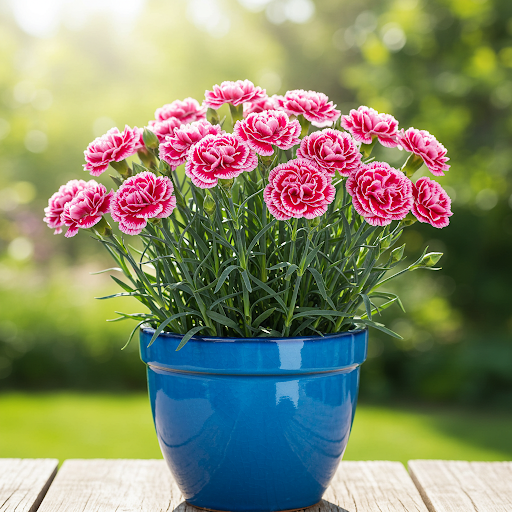
Carnations
For more detailed botanical information and to explore the diverse world of Carnations, you can visit the Wikipedia page on Dianthus caryophyllus.
Important Note: The key to success with Carnations in pots is providing excellent drainage, full sun, and avoiding overwatering. With proper care and a sunny location, your potted Carnations will reward you with months of beautiful, fragrant blooms and classic floral charm in your outdoor spaces!**
20YB
By greenship|2024-08-16T05:37:57+00:00August 16, 2024|Categories: Hand-carving Series|
11TH
By greenship|2024-08-13T02:50:25+00:00August 13, 2024|Categories: Hand-carving Series|
11V
By greenship|2024-08-13T03:05:48+00:00August 13, 2024|Categories: Hand-carving Series|
Modern Plant Pots with Drainage – Indoor & Outdoor Use (6″ Widths)
By greenship-seo|2025-04-10T06:29:43+00:00February 6, 2025|Categories: Hand-carving Series|Tags: Decorative Flower Pots|
KC3-09k
By greenship|2024-08-16T06:24:36+00:00August 16, 2024|Categories: Hand-carving Series|
Planter for Indoor Outdoor Plants, Set of 2 Modern Decorative Plant Pots with Drainage Hole, Decorative Flower Pots
By greenship-seo|2025-01-14T12:26:44+00:00January 14, 2025|Categories: Hand-carving Series|Tags: Decorative Flower Pots|

